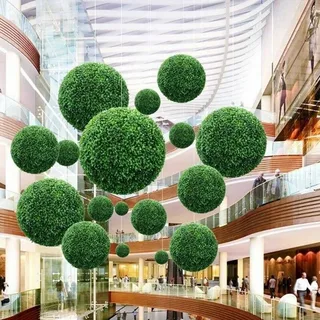The rise of artificial plants is reshaping the landscape of home decor, offering sustainable solutions that cater to the needs of today’s consumers. As more people seek to enhance their living spaces with greenery, artificial plants provide an appealing alternative to natural options. This article delves into how artificial plants are transforming modern interiors through sustainability, convenience, and aesthetic appeal.
Embracing Sustainability
In an age of increasing environmental awareness, consumers are making more conscious choices in their purchasing decisions. Artificial plants offer a sustainable option that minimizes the environmental impact associated with live plant cultivation, such as water usage and transportation emissions. Many manufacturers are now producing artificial plants from recycled or eco-friendly materials, appealing to environmentally conscious shoppers who want to incorporate greenery into their homes without the ecological footprint of live plants.
The Convenience Factor
One of the main attractions of artificial plants is their low-maintenance nature. Busy lifestyles often leave little time for plant care, making faux greenery an ideal choice for many. Homeowners can enjoy the beauty of plants without the need for watering, sunlight, or pruning. This convenience is especially beneficial in urban environments where natural light can be scarce.
In commercial settings, artificial plants enhance the atmosphere without the worry of upkeep. Restaurants, offices, and retail spaces are increasingly using faux plants to create inviting environments that promote well-being among customers and employees alike. The longevity and durability of artificial plants ensure they remain vibrant and appealing, even in high-traffic areas.
Aesthetic Versatility
Today’s artificial plants are designed to be incredibly realistic, mimicking the look and feel of natural foliage. Advances in manufacturing technology have led to lifelike textures, colors, and details that enhance their aesthetic appeal. This realism allows homeowners to use artificial plants in a variety of settings, from minimalist designs to lush, bohemian styles.
The versatility of artificial plants also enables creative arrangements. They can be displayed in pots, hung in baskets, or arranged in centerpieces, offering countless possibilities for home styling. Whether used as focal points or subtle accents, artificial plants can transform a space, bringing a touch of nature indoors.
E-commerce and Accessibility
The growth of e-commerce has made artificial plants more accessible than ever. Online retailers offer a vast selection of styles and sizes, allowing consumers to find the perfect faux greenery for their spaces with ease. This convenience, combined with detailed product descriptions and reviews, helps shoppers make informed decisions.
Social media platforms have further popularized artificial plants, showcasing innovative uses and arrangements. Influencers and home decor enthusiasts highlight the beauty and practicality of artificial plants, inspiring others to incorporate them into their own homes.
Conclusion
Artificial plants are redefining the way we think about home decor, offering sustainable, low-maintenance, and aesthetically pleasing solutions for modern interiors. As consumer preferences shift toward eco-friendly and convenient options, the demand for artificial plants continues to rise. By embracing these versatile decor elements, homeowners can create beautiful, inviting spaces that reflect their style while supporting sustainability.



